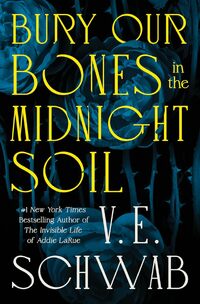“Wicked” has filled our screens with images of a green-skinned girl who soon acquires a black hat and a flying broomstick and an attitude—our traditional image of the witch reinforced over countless Halloweens. Though Elphaba is young in this prequel, witches generally are depicted as old. Why?
Witches, wise women, hags, cunning folk, crones. They are all part of an ancient tradition from the time of matriarchal societies—the Triple Goddess, who represents all women in an ever-shifting form, a goddess of new life in spring, of the full moon and summer fruitfulness, and the goddess of winter and darkness and prophecy called the Cailleach in Ireland and Scotland.
This traditional belief morphed over the centuries and empires, but with the spread of Christianity, the divine role of the female was shrunken down to Mary alone. Solely a mother, never the radiant bride nor the powerful ruler of the dark moon. Women were viewed as daughters of Eve, creatures of uncontrolled passions and dangerous frailty. Those who did not submit to the new order were cast out as witches, linked to Satan and evil.
In my historical novel UPON THE CORNER OF THE MOON, about the Macbeths, the power of the Triple Goddess or “White Lady” is represented by Gruach. Who was this woman who was shaped into “Lady Macbeth,” really? The short answer is that we do not know, so I have had a broad empty canvas on which to work.
We know her name, Gruach, and her father’s name and a brother’s (perhaps). She was a woman of royal lineage whose marriages helped unify the lines of succession. We have a record of her gifting land to a monastery alongside her husband, King Macbeth. This may have been land she controlled in her family lineage through the deaths of male heirs, or by her first marriage. Celtic law allowed women to hold property in their own right, which gave them more leverage in their communities.
As with “Wicked,” I’ve gone back before the events of the tragedy to imagine the childhood of my characters, to develop them as people and immerse the reader in their world. They are definitely not the characters created by Shakespeare. The historical record, however thin, was always the template for the story.
In my telling, Gruach was raised in exile among the remnants of a Goddess religion that extended back to the Neolithic stone circles of Orkney. She becomes a devotee and then priestess, the White Lady healing and leading her people. There’s no infamous “Lady Macbeth,” an ambitious woman haranguing her husband to murder, no madwoman scrubbing at a “damned spot.”
But I did choose to keep the witches—only not as witches.
This eternal maiden/mother/crone also appears to Macbeth. As in Shakespeare, there is an encounter on the heath. His Christian education makes him shun the visitation until she takes the form of Mary cradling her son—one of her aspects, and an image common to religions across the ancient world. He remains haunted by the encounter, her predictions, and her charge that he “remember the White Lady” when he comes to power.
Along with the witches of “Wicked” and other recent releases, many movies and books from “The Crucible” to “The Witch” have been based on historical witch trials in Britain, Europe, and colonial America. I recently read The Last Witch of Scotland by Philip Paris. This novel, the Waterstones Scottish Book of the Year in 2024, was inspired by the true story of Janet Horne. She was the last person to be executed in Britain under the Witchcraft Act, in effect from 1563 until 1736. This happened near Dornoch in the northeast Highlands, an area that also figures in my novel. Today, memorials have been built and apologies framed for the 2,500 people, mostly women, mostly in Scotland, who were burned or strangled because of witchcraft accusations. This special tartan has been created to memorialize the lives lost to the witchcraft laws.
Scotland had a particularly fraught relationship with witches as a result of King James VI, a believer in witchcraft, author of the Daemonologie, and future King James I of the united English and Scottish kingdoms. He was also the king who commissioned the famous Bible. And the ruler when Shakespeare was writing plays to appeal to both commoners and nobles, but particularly the king.
The powerful female goddess of my imaginings does have another connection with the Shakespeare play. In “Macbeth,” the goddess Hecate is on stage twice. She’s a Classical goddess of magic, not Celtic, often depicted by the Greeks and Romans as triple-bodied. She appears as the ruler of the “Weird Sisters” whose illusions bring about Macbeth’s downfall. She appears in Act III Scene 5 to scold the witches for their unsanctioned “trade and traffic” with Macbeth, and then says:
“Great business must be wrought ere noon:
Upon the corner of the moon
There hangs a vaporous drop profound;
I’ll catch it ere it come to ground:
And that distill’d by magic sleights
Shall raise such artificial sprites
As by the strength of their illusion
Shall draw him on to his confusion…”
Why exactly they wished to ruin the victorious general and honored leader is not specified. They were, after all, evil. But Shakespeare’s invention of this memorable scene of the witches around the cauldron and their ruling deity helps dramatize the conflict of natural versus supernatural, free will versus fate.
UPON THE CORNER OF THE MOON did not have that title for most of its writing. After much agonizing over various titles, my wonderful editor and publisher, Jaynie Royal, combed through “Macbeth” and found this phrase. I love how it brings together the play and my novel, where women’s spirituality, marked by the cycles of the earth and the moon, is raised up from the darkness.
Alba #1

A Tale of the Macbeths
At the dawn of the second millennium, two royal Scottish children are swept away from their families—Macbeth to the perilous royal court of his grandfather, and Gruach to the remnants of the goddess-worshiping Picts. Macbeth learns that blood bonds are easily severed while Gruach finds her path only to lose it when she’s summoned back to the patriarchal world. Each struggle with gaining and losing power, guided and misguided by prophecy and politics as their paths converge in a fiery bid for royal succession. Upon the Corner of the Moon separates literary legend from reality, immersing readers in a story about the real rulers who changed the face of Scotland. Some legends are true, and the truth sometimes becomes a legend—or a lie. This novel masterfully dovetails the Macbeth legend and the truth without sacrificing either.
Historical [Regal House Publishing, On Sale: March 11, 2025, Paperback / e-Book , ISBN: 9781646035359 / ]

Valerie Nieman’s In the Lonely Backwater won the 2022 Sir Walter Raleigh Award and was a Foreword INDIES Book of the Year finalist. Her critically acclaimed work includes To the Bones, Blood Clay (Eric Hoffer Award), and collections of poetry and short fiction. She has held state and NEA creative writing fellowships. A graduate of West Virginia University and Queens University of Charlotte, she is professor emerita at NC A&T State University.
No comments posted.


 © 2003-2025 off-the-edge.net
all rights reserved Privacy Policy
© 2003-2025 off-the-edge.net
all rights reserved Privacy Policy